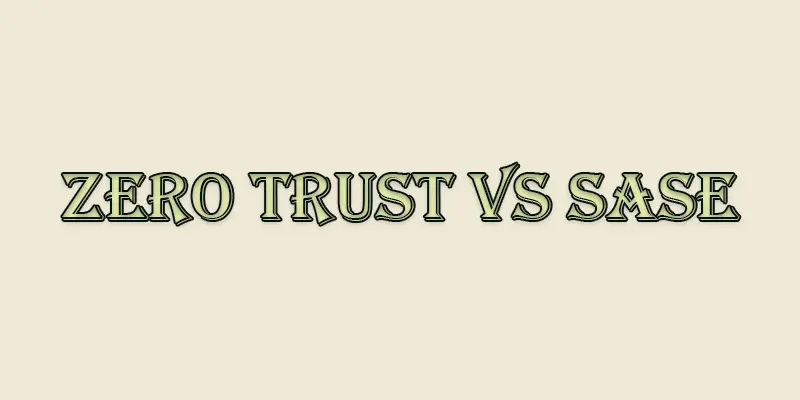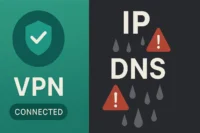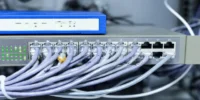SASE vs Zero Trust | Which Security Model is Right for You?
Published: 12 Feb 2025
SASE vs Zero Trust
Did you know that both SASE and Zero Trust are transforming the way businesses secure their networks? But how do you choose between them? If you’re facing challenges with managing access control or ensuring strong security for your remote workforce, understanding the differences between SASE and Zero Trust is key. Let’s dive into how these two solutions work and help you decide which one fits your company’s security needs.
What is a SASE?
SASE (Secure Access Service Edge) is a cloud-driven security solution that integrates both networking and security functions, ensuring secure access to applications for users anywhere.

What is a Zero Trust?
According to the zero-trust security concept, nobody can be trusted, either inside or outside the network. Before allowing access to any resources, people and devices must be continuously verified.
What is the Difference Between SASE and Zero Trust?
The difference between SASE and Zero Trust lies in their focus, with SASE provides a broad network and security solution, while Zero Trust specifically emphasizes strict user verification and access control.
| SASE | Zero Trust |
|---|---|
| A cloud-based solution combining network and security services. | A security model where access is granted only after ongoing verification. |
| Provides a comprehensive approach to network and cloud security. | Focuses on verifying every user and device before access is granted. |
| Combines network security, data protection, and access control. | Strictly focuses on identity verification and access control. |
| Includes SD-WAN and firewall to optimize and secure network traffic. | Doesn’t directly address network security, but integrates with existing network security solutions. |
| Offers centralized control over all user access across the network. | Enforces user verification for every access request, regardless of location. |
| Integrates with cloud services and apps, optimizing security and performance. | Works with cloud environments but focuses more on verifying access rather than network performance. |
| Replaces traditional VPNs by securely connecting users to apps and data. | Can complement or replace VPNs by ensuring only authorized users access specific resources. |
| Secures data as it moves across networks and in the cloud. | Protects data by verifying access at every step and enforcing least-privilege principles. |
| Enforces security policies across the entire network and cloud environment. | Enforces strict policies based on user identity and access rights. |
| Broad security across multiple layers (network, cloud, and app). | Granular access control for specific users, devices, and applications. |
| Reduces risks by integrating network performance and security measures. | Reduces risks by ensuring that every access request is properly authenticated. |
| Improves cloud application performance through SD-WAN and security features. | Does not focus on performance, but ensures secure access to resources. |
| Cloud-native architecture, often deployed across hybrid or multi-cloud environments. | Can be implemented on-premises or in the cloud, depending on the organization’s needs. |
| Helps organizations meet compliance requirements by securing access to sensitive data. | Focuses on compliance by enforcing strict user authentication and access management. |
| Best suited for organizations needing a holistic approach to cloud security. | Ideal for organizations that prioritize secure access to specific resources or apps. |
| Highly scalable to meet the needs of large enterprises and distributed teams. | Scalable, particularly in environments requiring strict access control. |
| Can be more expensive due to the broad security features. | Generally less expensive and more focused on access control, but costs can grow with implementation complexity. |
| A global organization uses SASE to manage security across a diverse network of cloud services. | A company uses Zero Trust to ensure only authorized employees can access sensitive financial data. |

Conclusion About Zero Trust vs SASE
SASE (Secure Access Service Edge) is a cloud-based framework that combines networking and security into one unified solution for better protection and access. When comparing SASE vs Zero Trust, SASE offers a complete security and networking approach, while Zero Trust focuses on strict user verification. I recommend businesses with remote teams and cloud operations adopt SASE, while those prioritizing access control start with Zero Trust. Want to explore the best option for your needs? Read our full guide now!
FAQS – What is Zero Trust
SASE networking combines network services like SD-WAN with security features to provide secure, efficient access to applications and data over the Internet.
ZTNA (Zero Trust Network Access) by Fortinet is a security solution that ensures only authorized users and devices can access applications, based on strict identity verification.
SASE in security refers to a cloud-based framework that combines both network security and access control to protect users and data.
A SASE solution is a comprehensive, cloud-native service that integrates networking, security, and access control to secure remote users and applications.
SASE stands for Secure Access Service Edge, a framework that combines network and security services in the cloud.
SASE security integrates multiple security services, like firewalls and zero-trust access, into one solution for securing network traffic and user access across the cloud.

- Be Respectful
- Stay Relevant
- Stay Positive
- True Feedback
- Encourage Discussion
- Avoid Spamming
- No Fake News
- Don't Copy-Paste
- No Personal Attacks

- Be Respectful
- Stay Relevant
- Stay Positive
- True Feedback
- Encourage Discussion
- Avoid Spamming
- No Fake News
- Don't Copy-Paste
- No Personal Attacks





